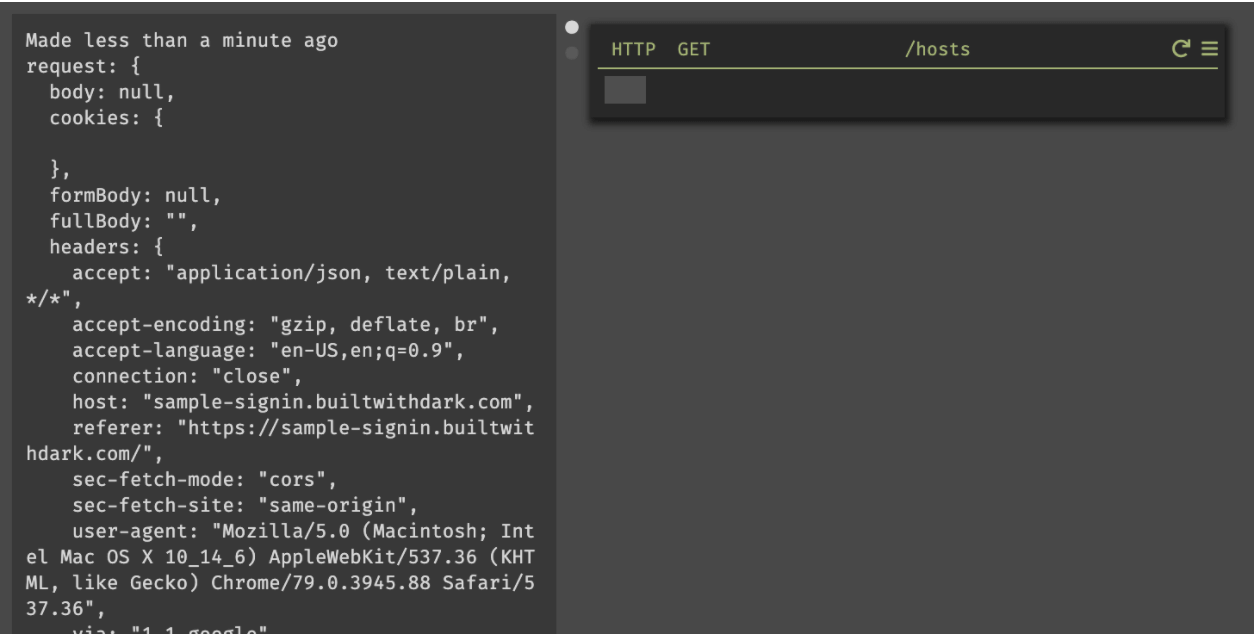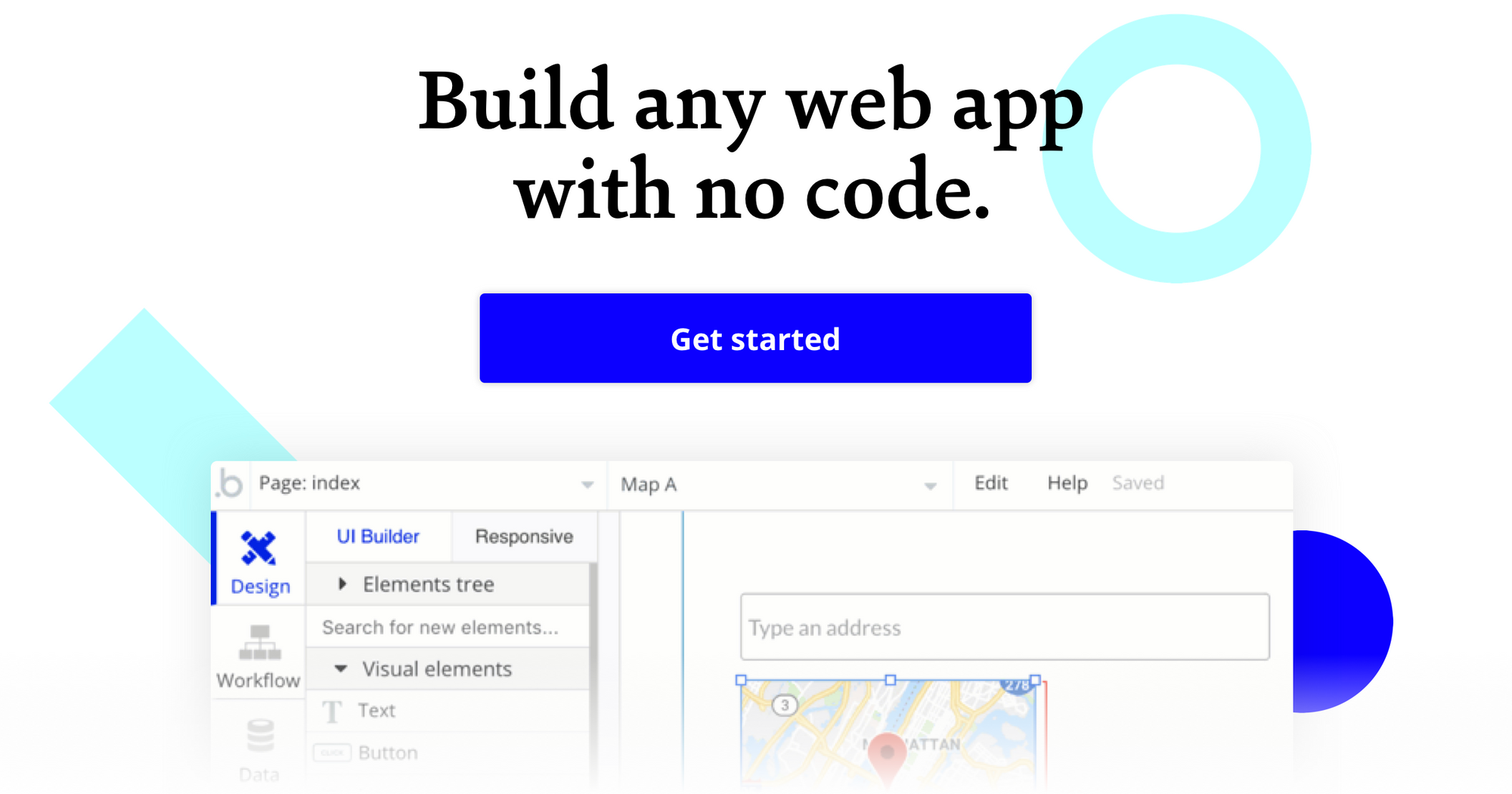At Bubble, we want to enable potential builders to create their ideas without traditional programming methods, so we are exploring and reviewing the many tools that developers might use to build their backend.
What is Dark?
Designed for developers, Dark is a holistic programming language, editor, and infrastructure for building backends without added complexity.
Dark describes itself as “a language built for deployed backends” that “deploys code in 50 milliseconds,” which is much faster than some of the quickest deploys in the industry, which still take 5-10 minutes.
Dark uses feature flags as replacements for deployments, sandboxes, different environments, and even version control. The language’s infrastructure is reduced to 4 components: HTTP endpoints, datastores, background workers, and scheduled jobs.

A browser-based code editor, Dark is currently an “integrated” solution, which means that you are unable to use your own editor. If you decide to use Dark for any given project, you will need to build your frontend elsewhere, but Dark is agnostic to your front-end language choice. The frontend communicates with Dark’s backend via HTTP requests.
Dark provides two types of functional languages: dynamic and static. Dynamic types enable you to prototype and iterate quickly, whereas static types let you see if your changes are actually working, especially for modifications that affect multiple aspects of your program.
In terms of its backend-building capabilities, Dark gives you the power to create a database back, define the data type, and use a REPL block to fill in some test data.
Who is Dark for?
Currently in private beta, Dark is a good option for developers building SPAs, mobile apps, new microservices in existing architectures, and internal tools.
While the Dark team is working on making the tool accessible to more developers, at the moment they are only providing access to those who are ready to start working on well-scoped projects.
Dark Cost and Pricing?
(Pricing model evaluation: June 2020)
Dark’s pricing is currently not available. According to Dark, the pricing structure will be determined by server traffic, computing power, and memory usage.
While it will be free to start, Dark will gradually scale up the price, depending on your usage. The free tier will most likely provide sufficient support for smaller projects.
Dark vs. Bubble: A Comparison
How does Dark compare to a no-code platform like Bubble?
Similarities between Dark and Bubble:
Both Dark and Bubble offer free, as well as paid, subscription options.
Both are good tools for developers who want to prototype and iterate quickly.
Both Dark and Bubble simplify the process of building your app’s backend.
Both enable you to build backends that integrate with frontends.
The key differences between Dark and Bubble are:
Deployment: Dark’s backends only take 50 milliseconds “to deploy,” but developers need to manage their code. Thanks to Dark’s feature flags, you have control over how and when specific features become live. With Bubble, the deployment process happens behind the scenes, you can create a new app by clicking “New application” and deploy it by clicking “Deploy to live.”
Front-end development: Dark does not address front-end development at all, so you have to build the frontend elsewhere. Bubble allows for both front and back-end events and element triggers, and comes with full database functionality beyond CMS. If your front-end is hosted on a different platform, you can build your app’s backend using Bubble and connect it to the frontend through an API.
Building method: Bubble empowers people with no prior coding experience to build applications using their drag-and-drop editor, as well as templates, which are available for free and for purchase by third-party creators, such as Rapid Dev. To benefit from Dark’s back-end building tool you must have a background in programming. Dark is an integrated solution with a browser-based code editor, so you are currently unable to use your own editor.

Types of users: At the moment, Dark is only available to developers with well-scoped projects. Bubble’s platform has been a part of the no-code community since 2012 and believes that everyone should be able to build complex, beautiful apps. Users include freelancers, non-technical entrepreneurs, teachers, developers, product designers, journalists, startups, and small businesses.
Version control: Dark provides an alternative to version control systems like git. Changes to your Dark code are organized around feature flags. While Dark supports unlimited undo and redo on all code, users are unable to see a list of historical versions. With Bubble, you can revert your app to any point in time, depending on what your specific plan allows. So if you accidentally delete a page and are unable to reverse this action by simply refreshing your browser, you are free to restore your app to a previous version using the Version Control Panel.
Dark Alternatives
Alternative tools that allow you to build a web application without traditional programming methods include the following tools:
If you’re looking for a platform that has support for native or mobile apps, consider using no-code tools like Adalo, Glide, or Thunkable.
If you are planning to build an e-commerce site that requires simple CMS, or would rather use a website template to build your project, consider templated website hosts like Carrd, Squarespace, Wix, or Weebly as alternatives.
If your needs extend beyond the backend and you require full flexibility with front-end events and element triggers, no-code platforms like Bubble are a good alternative to Dark.
If you want an open-source CMS platform with robust plugins that allow for integrations with databases like MongoDB, take a look at WordPress.
If you’re looking for a no-code platform with an enterprise focus, Unqork, Retool, and Betty Blocks are good options.
About Bubble
Bubble is a leader in the no-code movement. Bubble offers a powerful point-and-click web editor and cloud hosting platform that allows users to build fully customizable web applications and workflows, ranging from simple prototypes to complex marketplaces, SaaS products, and more. Over 400,000 users are currently building and launching businesses on Bubble - some have gone on to participate in top accelerator programs, such as Y Combinator, and even raised $365M in venture funding. Bubble is more than just a product. We are a strong community of builders and entrepreneurs that are united by the belief that everyone should be able to create technology.
Join the no-code movement today.
Disclaimer: The goal of these reviews is to provide an honest, practical, differentiated comparison of features and educate readers on tools in the no-code ecosystem so that you can evaluate how these services fit together and serve your needs.





